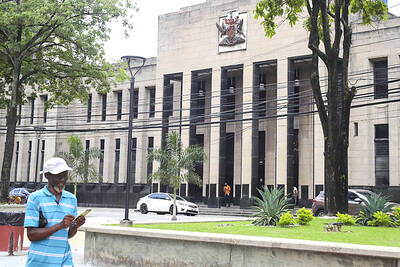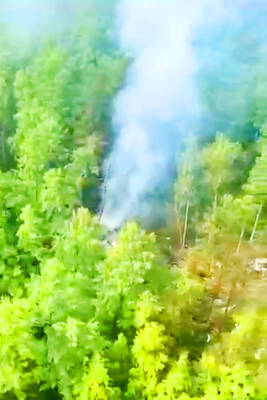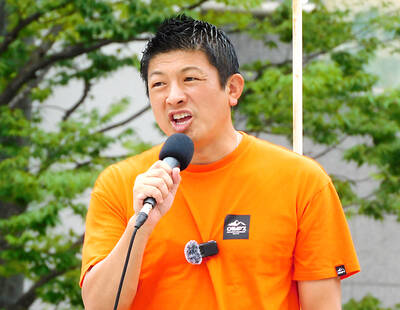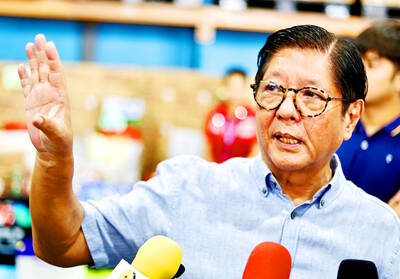North Korea has handed detailed nuclear weapons records to the US, an important peek into the isolated regime’s bombmaking past but not enough to answer criticism that the administration of US President George W. Bush is grasping for a disarmament deal at any cost.
The technical logs from North Korea’s shuttered plutonium reactor would give outside experts a yardstick to measure whether the North is telling the truth about a bomb program that the poor nation has agreed to trade away for economic and political rewards.
“Our top three priorities are going to be verification, verification, verification,” State Department spokesman Sean McCormack said on Thursday.
A US diplomat collected the eight boxes of records during a three-day visit to Pyongyang. McCormack said getting the papers was the main reason for the trip.
Privately, State Department officials hope the approximately 18,000 secret papers will build confidence among conservative critics of the recent, relatively flexible U.S. posture toward North Korea, an isolated dictatorship President Bush once termed part of an “axis of evil.”
The Bush administration’s comprehensive disarmament deal last year with the North requires some congressional approval, and Republican unease is growing.
The North is five months past a deadline to produce a complete record of its weapons programs or an alleged side business selling nuclear know-how to other countries, and US officials announced no new deadline for the summary.
The North claims it met its obligations, but has also agreed to a new tentative deal to break the impasse. That deal would have the North acknowledge US concerns about an illicit uranium program and alleged sale or transfer of nuclear know-how to other nations but would not require the North to spell everything out.
The deal would set up a system to verify that North Korea is telling the truth and does not restart banned nuclear activities.
Terms of the deal do not satisfy some congressional Republicans whose votes the administration will probably need to provide money promised for weapons disposal and other pledges to the North.
“It is greater transparency on one part of North Korea’s nuclear program, but none on the others,” Representative Ed Royce said of Thursday’s document dump. Royce is the top Republican on the Foreign Affairs Committee’s panel on terrorism and nonproliferation.
Representative Peter Hoekstra, the Intelligence Committee’s senior Republican, said he hasn’t seen the details but that he’s skeptical of their import.
“Any mediocre performance by North Korea is taken as an earth-shattering positive development by our State Department,” he said. “It appears they will say anything to get a deal.”
North Korea agreed in recent weeks to blow up the cooling tower at Yongbyon, a largely symbolic display but one intended to demonstrate good faith in its nuclear talks with the US.

Trinidad and Tobago declared a new state of emergency on Friday after authorities accused a criminal network operating in prisons across the country of plotting to kill key government officials and attack public institutions. It is the second state of emergency to be declared in the twin-island republic in a matter of months. In December last year, authorities took similar action, citing concerns about gang violence. That state of emergency lasted until mid-April. Police said that smuggled cellphones enabled those involved in the plot to exchange encrypted messages. Months of intelligence gathering led investigators to believe the targets included senior police officers,

FOREST SITE: A rescue helicopter spotted the burning fuselage of the plane in a forested area, with rescue personnel saying they saw no evidence of survivors A passenger plane carrying nearly 50 people crashed yesterday in a remote spot in Russia’s far eastern region of Amur, with no immediate signs of survivors, authorities said. The aircraft, a twin-propeller Antonov-24 operated by Angara Airlines, was headed to the town of Tynda from the city of Blagoveshchensk when it disappeared from radar at about 1pm. A rescue helicopter later spotted the burning fuselage of the plane on a forested mountain slope about 16km from Tynda. Videos published by Russian investigators showed what appeared to be columns of smoke billowing from the wreckage of the plane in a dense, forested area. Rescuers in

A disillusioned Japanese electorate feeling the economic pinch goes to the polls today, as a right-wing party promoting a “Japanese first” agenda gains popularity, with fears over foreigners becoming a major election issue. Birthed on YouTube during the COVID-19 pandemic, spreading conspiracy theories about vaccinations and a cabal of global elites, the Sanseito Party has widened its appeal ahead of today’s upper house vote — railing against immigration and dragging rhetoric that was once confined to Japan’s political fringes into the mainstream. Polls show the party might only secure 10 to 15 of the 125 seats up for grabs, but it is

Philippine President Ferdinand Marcos Jr is to meet US President Donald Trump this week, hoping Manila’s status as a key Asian ally would secure a more favorable trade deal before the deadline on Friday next week. Marcos would be the first Southeast Asian leader to meet Trump in his second term. Trump has already struck trade deals with two of Manila’s regional partners, Vietnam and Indonesia, driving tough bargains in trade talks even with close allies that Washington needs to keep onside in its strategic rivalry with China. “I expect our discussions to focus on security and defense, of course, but also